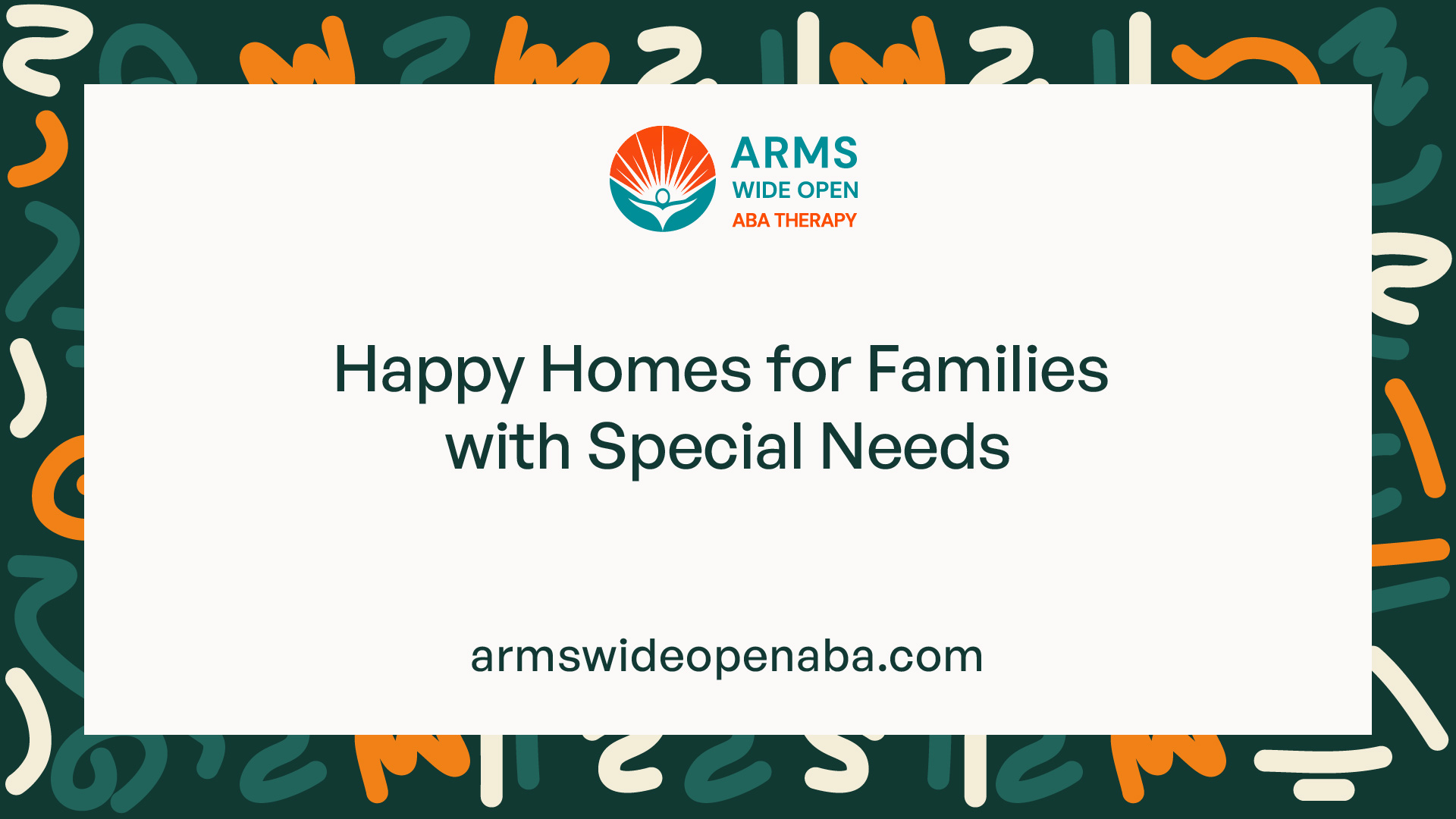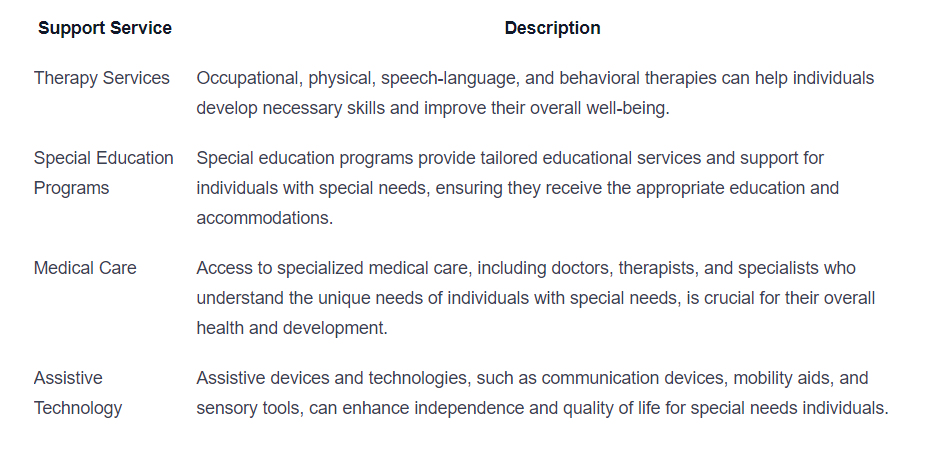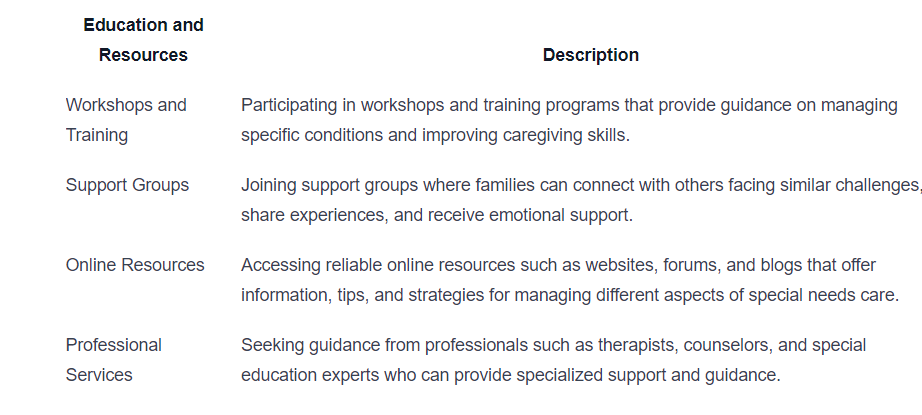Happy Homes for Families with Special Needs
Creating happy homes for families with special needs. Discover the power of support, inclusion, and love in empowering special individuals.

Understanding Special Needs Families
Special needs families face unique challenges in their daily lives, requiring a deep understanding and empathetic approach. By acknowledging these challenges and creating a happy home environment, families can provide the necessary support and care for their loved ones with special needs.

The Challenges Faced by Special Needs Families
Special needs families encounter a range of challenges that can impact their daily routines, relationships, and overall well-being. These challenges may include:
- Physical and Emotional Demands: Caring for individuals with special needs often requires additional physical and emotional energy. It can involve providing assistance with daily activities, managing medical needs, and addressing behavioral and emotional challenges.
- Financial Strain: Special needs individuals may require specific therapies, assistive devices, and educational resources, which can impose financial burdens on families. Navigating insurance coverage and finding appropriate services can also be challenging.
- Limited Accessibility: Accessing appropriate healthcare, educational opportunities, and recreational activities can be more difficult for special needs families. Lack of accessibility and inclusive environments can further compound these challenges.
- Social Isolation: Special needs families may experience social isolation due to the unique demands of caring for their loved ones. Balancing responsibilities and finding inclusive community spaces can be challenging, leading to feelings of loneliness and exclusion.
Importance of Creating a Happy Home Environment
Creating a happy home environment is vital for special needs families. A nurturing and supportive home can positively influence the overall well-being of individuals with special needs and their families. Here are some key reasons why a happy home environment is essential:
- Stability and Routine: Establishing a consistent routine and structure can provide a sense of stability and security for individuals with special needs. Predictability helps reduce anxiety and promote a sense of calm within the home.
- Emotional Support: A happy home environment fosters emotional support and open communication. Family members can openly express their emotions, concerns, and needs, allowing for effective problem-solving and connection.
- Inclusion and Belonging: Creating an inclusive environment where every family member feels valued and included is crucial. This helps individuals with special needs develop a sense of belonging, self-confidence, and self-worth within their own family unit.
- Positive Interactions: Encouraging positive interactions and celebrating achievements and milestones can strengthen family bonds. Small victories and progress should be acknowledged, promoting a positive atmosphere and a shared sense of accomplishment.
By understanding the challenges faced by special needs families and prioritizing the creation of a happy home environment, families can provide the necessary support and care for their loved ones. It is through empathy, understanding, and a nurturing atmosphere that special needs families can thrive and overcome obstacles together.
Designing an Inclusive Home
When it comes to creating a happy home for families with special needs, designing an inclusive environment is of utmost importance. By adapting the physical environment and creating sensory-friendly spaces, families can ensure that their home supports the unique needs of their loved ones.
Adapting the Physical Environment
Adapting the physical environment of the home is essential to accommodate the specific requirements of individuals with special needs. This involves making modifications and adjustments to ensure accessibility, safety, and comfort. Some key considerations include:
- Wheelchair Accessibility: Ensure that doorways, hallways, and rooms are wide enough to accommodate wheelchairs. Install ramps or lifts where necessary to provide easy access to different areas of the home.
- Safety Measures: Install safety features such as grab bars, handrails, and non-slip flooring in areas prone to accidents, such as bathrooms and staircases. Remove any potential hazards or obstacles that may pose risks to individuals with mobility challenges.
- Lighting and Color: Optimize lighting in the home to minimize glare and create a well-lit environment. Consider using soothing colors on walls and surfaces to promote a calm and visually comfortable atmosphere.
- Furniture Arrangement: Arrange furniture in a way that allows for easy movement and navigation. Create open spaces to accommodate mobility aids and ensure that furniture is sturdy and safe for individuals with special needs.
Creating Sensory-Friendly Spaces
For individuals with sensory sensitivities, having sensory-friendly spaces within the home can make a significant difference in their well-being. These spaces provide a calming and comfortable environment that minimizes sensory overload. Here are some ways to create sensory-friendly spaces:
- Quiet Zones: Designate quiet zones in the home where individuals can retreat to when they need a break from sensory stimulation. These areas should be free from loud noises, bright lights, and excessive visual clutter.
- Sensory Materials: Incorporate sensory materials such as soft textures, weighted blankets, and sensory toys into the home environment. These can provide comfort and promote relaxation for individuals who benefit from tactile stimulation.
- Calming Colors: Choose soothing and neutral colors for sensory-friendly spaces to create a serene atmosphere. Avoid using overly bright or stimulating colors that may cause sensory distress.
- Soundproofing: Consider using soundproofing techniques in certain areas of the home to minimize noise disturbances. This can be particularly beneficial for individuals who are sensitive to loud sounds.
Creating an inclusive home environment involves understanding the specific needs of individuals with special needs and making modifications accordingly. By adapting the physical environment and creating sensory-friendly spaces, families can ensure that their home supports the well-being and happiness of their loved ones.
Supporting Special Needs Individuals
In order to create happy homes for families with special needs, it is crucial to provide support to the individuals with special needs themselves. This support can come in the form of access to support services and building a strong support network.
Access to Support Services
Access to support services is essential for special needs individuals and their families. These services can provide assistance, guidance, and resources to help navigate the challenges associated with special needs. Here are some common support services that can contribute to a happy home environment:

By ensuring access to these support services, families can provide the necessary tools and resources for their loved ones with special needs to thrive.
Building a Strong Support Network
Building a strong support network is equally important in creating a happy home for special needs individuals. A support network consists of individuals or groups who provide emotional support, guidance, and understanding. Here are some key components of a strong support network:

By actively seeking out and nurturing a strong support network, families can find solace, guidance, and encouragement, ultimately creating a happy and inclusive home environment for their special needs loved ones.
Promoting Emotional Well-Being
Ensuring the emotional well-being of families with special needs individuals is paramount to creating a happy and nurturing home environment. In this section, we will explore two key aspects of promoting emotional well-being: encouraging open communication and managing stress and burnout.
Encouraging Open Communication
Open and effective communication within the family is essential for understanding and meeting the emotional needs of special needs individuals. Creating a safe and supportive space where everyone feels comfortable expressing their thoughts, concerns, and emotions is crucial.
Here are some strategies to encourage open communication:
- Active Listening: Actively listen to each family member, showing empathy and understanding. Encourage them to share their feelings and experiences without judgment.
- Regular Family Meetings: Hold regular family meetings to discuss any challenges or issues that may arise. This provides an opportunity for everyone to express their thoughts and work together to find solutions.
- Use Visual Aids: For individuals with communication difficulties, visual aids such as picture schedules, social stories, or visual cues can aid in expressing emotions and needs. These tools facilitate understanding and effective communication.
- Seek Professional Guidance: If communication barriers persist or become challenging to navigate, consider seeking the assistance of a speech-language pathologist or a family therapist who specializes in working with special needs families.
Managing Stress and Burnout
Caring for a special needs individual can bring about unique stressors and challenges. It is crucial for family members to prioritize their own well-being to prevent burnout and maintain a healthy and supportive environment.
Here are some strategies for managing stress and burnout:
- Self-Care: Engage in self-care activities that promote relaxation and reduce stress. This could include exercise, practicing mindfulness or meditation, pursuing hobbies, or seeking respite care options to take breaks and recharge.
- Seek Support: Reach out to support groups, online communities, or local organizations that cater to families with special needs. Connecting with others who understand your experiences can provide emotional support and valuable insights.
- Delegate Responsibilities: Share caregiving responsibilities with other family members or trusted individuals. Delegating tasks can help distribute the workload and alleviate stress.
- Access Respite Services: Take advantage of respite care services that provide temporary relief for caregivers. This allows caregivers to take breaks, attend to their own needs, and return to caregiving with renewed energy.
Remember, emotional well-being is a shared responsibility within the family. By fostering open communication and implementing strategies to manage stress and burnout, families can create a supportive and harmonious environment for everyone involved.
Educating and Empowering
When it comes to supporting families with special needs individuals, education and empowerment play a crucial role. By advocating for rights and inclusion and providing access to education and resources, families can navigate the challenges they face more effectively.
Advocating for Rights and Inclusion
Advocacy is an essential component in ensuring that individuals with special needs have equal rights and opportunities. By advocating for their rights, families can help create a more inclusive society that values and supports individuals with special needs.

In addition to advocating for rights, families can also play a vital role in promoting inclusion. This can involve raising awareness about the capabilities and contributions of individuals with special needs, challenging stereotypes, and fostering an inclusive mindset within their communities.
Providing Education and Resources
Education and access to resources are fundamental for empowering families with special needs individuals. By providing information and resources, families can gain a better understanding of their loved one's condition and learn strategies to support their unique needs.

By having access to education and resources, families can gain the knowledge and skills necessary to navigate the complexities of caring for a special needs individual. This empowers them to make informed decisions, advocate effectively, and provide the best possible support for their loved ones.
Empowering families through education and advocacy not only benefits the individuals with special needs but also contributes to the overall well-being and happiness of the entire family. By working together to advocate for rights and inclusion and by providing education and resources, families can create a supportive and nurturing environment where every member can thrive and reach their full potential.
Cultivating Acceptance and Love
Creating a happy home environment for families with special needs individuals goes beyond physical adaptations and support services. It involves fostering understanding, acceptance, and celebrating achievements and milestones. In this section, we will explore two key aspects of cultivating acceptance and love within these families.
Fostering Understanding and Acceptance
One of the most important elements in creating a happy home for special needs individuals is fostering understanding and acceptance within the family and the larger community. This begins with education and awareness about the unique challenges and strengths of individuals with special needs.
By educating family members, friends, and neighbors about different disabilities and conditions, we can break down barriers and promote empathy and inclusivity. Encourage open conversations about special needs, address misconceptions, and provide accurate information to dispel any stigma or discrimination.
In addition, it's essential to promote a culture of acceptance within the family. Emphasize the value of diversity and teach children and other family members to appreciate and respect individuals with special needs. Encourage siblings to develop strong bonds with their special needs siblings, fostering a sense of unity and support.
Celebrating Achievements and Milestones
Celebrating achievements and milestones is a powerful way to nurture a positive and loving environment for special needs individuals. Acknowledging and commemorating progress, no matter how small, helps boost self-esteem, motivation, and overall happiness.
Create a culture of celebration within the family by recognizing achievements such as learning a new skill, mastering a task, or reaching a personal goal. This could be through praise, rewards, or special family activities. By doing so, you reinforce the idea that every accomplishment is significant and worthy of celebration.
It's important to adapt celebrations to accommodate the unique needs of individuals with special needs. Consider their preferences, sensory sensitivities, and communication styles. For example, if loud noises are overwhelming, opt for quieter celebrations or provide noise-canceling headphones. Ensure that everyone feels comfortable and included in the festivities.
Remember, cultivating acceptance and love is an ongoing process. Regularly revisit and reinforce the values of understanding, acceptance, and celebration within your family. By doing so, you create an environment where everyone feels respected, valued, and loved, fostering a truly happy home for special needs individuals.
Sources
http://www.autismsocietyphilippines.org/2014/05/happy-homes-for-families-with-special.html
https://www.autismspeaks.org/housing-and-community-living
http://www.autismsocietyphilippines.org/2014/05/happy-homes-for-families-with-special.html
Similar articles
We’re here to help you

Our team is here to assist you in this process. Contact us for any assistance.
it’s easy to apply
We Accept Most Insurances
Our in-network insurance partnerships make ABA therapy more accessible to families throughout our service areas.







Our Insurance Process
We'll request your insurance details to help us verify your plan's coverage for ABA therapy. Once we've received this information, we'll walk you through your benefits, including copayments, deductibles and out-of-pocket maximums, so you know what to expect in advance.
Our team will then handle the preauthorization and all the necessary paperwork.
.svg)





















.jpeg)


































.jpeg)




.jpeg)







.jpeg)











.jpeg)
















